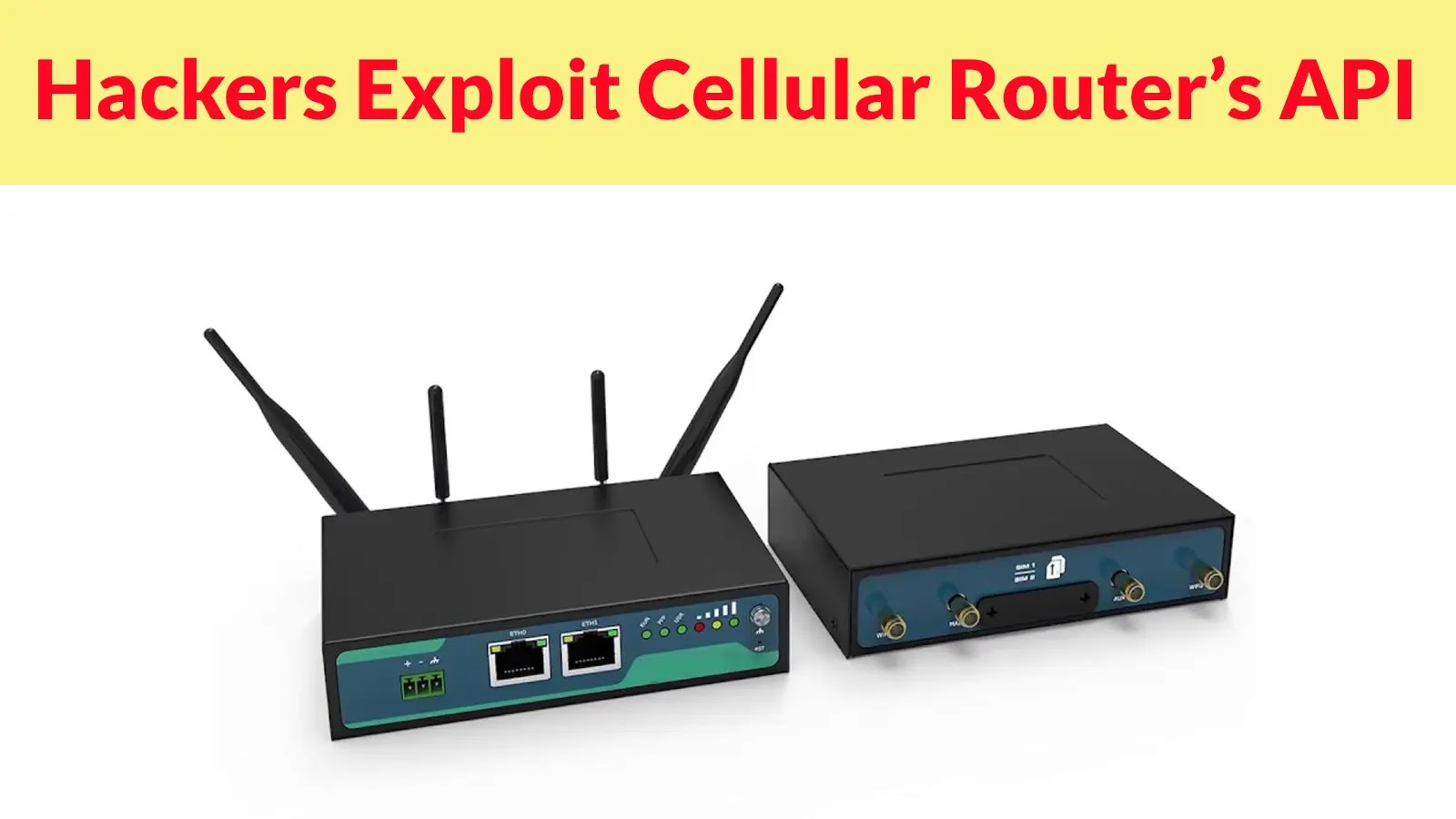
Hackers Exploit Cellular Router’s API to Send Malicious SMS Messages With Weaponized Links
The digital landscape is a constant battleground, and threat actors are perpetually seeking new vulnerabilities to exploit. A recent alarming development spotlights cellular routers, devices often seen as simple internet gateways, being weaponized for malicious purposes. Hackers have successfully leveraged exposed APIs within these routers’ web-based management interfaces to dispatch large volumes of malicious SMS messages. These messages, laden with weaponized links, lead unsuspecting recipients to drive-by downloads or credential-stealing pages. This emerging threat vector is a stark reminder that no network edge device is immune to sophisticated attacks.
The Anatomy of the Attack: Exploiting Cellular Router APIs
The core of this attack revolves around the exploitation of application programming interfaces (APIs) embedded within the web-based management interfaces of specific cellular routers. Many modern cellular routers come equipped with built-in SMS functionality, designed for legitimate purposes such as sending configuration updates or alerts. However, when these APIs are left exposed or poorly secured, they become an open door for malicious actors. By interacting directly with these APIs, attackers can bypass typical user interfaces and programmatically control the router’s SMS capabilities.
The process generally involves:
- Discovery of Exposed APIs: Threat actors scan for cellular routers with openly accessible web management interfaces and discover endpoints related to SMS functionality.
- API Manipulation: Once discovered, attackers craft requests to these APIs, instructing the router to send SMS messages. This often requires understanding the API’s structure and expected parameters.
- Malicious Payload Delivery: The SMS messages dispatched through the compromised router contain weaponized links. These links can lead to a variety of nefarious outcomes, including:
- Drive-by Downloads: Unsuspecting users clicking these links may unknowingly download malware onto their devices.
- Credential Phishing: Links redirect to sophisticated phishing pages designed to steal login credentials for various online services.
Why Cellular Routers are Prime Targets
Cellular routers, particularly those deployed in remote locations, IoT deployments, or by small businesses, can often be neglected in terms of stringent security practices. Several factors contribute to their vulnerability:
- Default Configurations: Many routers are deployed with default login credentials or insecure settings that are rarely changed.
- Lack of Timely Updates: Firmware updates, which often patch critical vulnerabilities, are frequently overlooked.
- Direct Internet Exposure: Cellular routers inherently provide direct internet access, making them accessible to attackers if not properly secured.
- Unmonitored Traffic: In many scenarios, the traffic originating from these devices, including SMS activity, is not routinely monitored for anomalies.
Remediation Actions: Securing Your Cellular Router
Protecting against this specific threat requires a proactive and multi-layered approach. Organizations and individuals utilizing cellular routers must implement robust security measures.
- Change Default Credentials Immediately: This is a foundational security step for any network device. Use strong, unique passwords.
- Update Firmware Regularly: Keep your router’s firmware up-to-date. Manufacturers frequently release patches for disclosed vulnerabilities. Check the vendor’s website for the latest firmware specific to your model.
- Restrict Remote Management Access: If remote management is necessary, ensure it is restricted to specific IP addresses or subnets. Ideally, use a VPN for secure remote access. Disable remote management entirely if not required.
- Implement Strong Firewall Rules: Configure your router’s firewall to block unnecessary incoming and outgoing traffic. Only allow essential ports to be open.
- Segment Networks: If possible, segment your network to isolate cellular routers from critical internal systems. This limits lateral movement if a router is compromised.
- Monitor Logs for Anomalies: Regularly review router logs for unusual activity, especially outbound SMS traffic or unauthorized access attempts.
- Conduct Regular Security Audits: Periodically audit the security posture of all network edge devices, including cellular routers.
Tools for Detection and Mitigation
Leveraging appropriate tools can significantly enhance your ability to detect and mitigate these types of vulnerabilities.
| Tool Name | Purpose | Link |
|---|---|---|
| Nmap (Network Mapper) | Port scanning and service enumeration to identify exposed management interfaces and open ports. | https://nmap.org/ |
| Shodan | Internet-wide search engine to identify exposed devices, including cellular routers, and their open ports/services. | https://www.shodan.io/ |
| OWASP ZAP (Zed Attack Proxy) | Web application security scanner to identify API vulnerabilities and misconfigurations in router web interfaces. | https://www.zaproxy.org/ |
| Router manufacturer’s official support channels | Accessing firmware updates and security advisories specific to your device. | (Varies by manufacturer) |
Conclusion
The exploitation of cellular router APIs for malicious SMS distribution underscores a critical shift in attack vectors. These seemingly innocuous devices, if left unsecured, can become powerful tools in a threat actor’s arsenal, allowing them to bypass traditional email and web filters to deliver highly targeted phishing and malware attacks. Proactive security measures, relentless patching, and vigilant monitoring are not merely best practices but essential fortifications against an ever-evolving threat landscape. Ignoring the security posture of any connected device, no matter how minor it seems, creates a potential Achilles’ heel for your entire operational environment.





